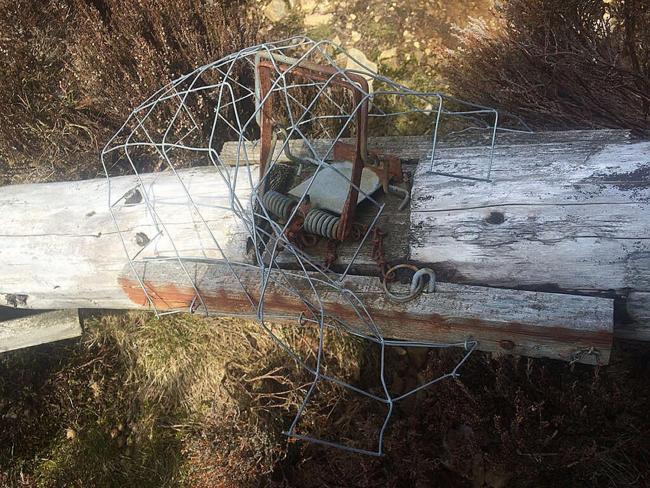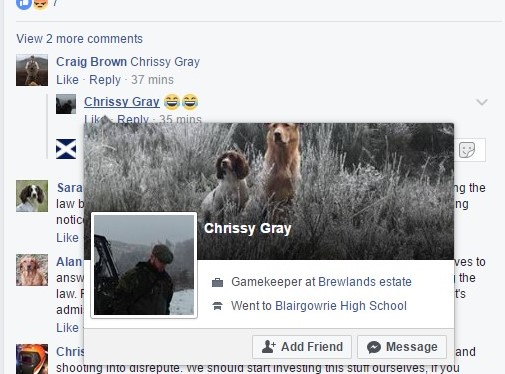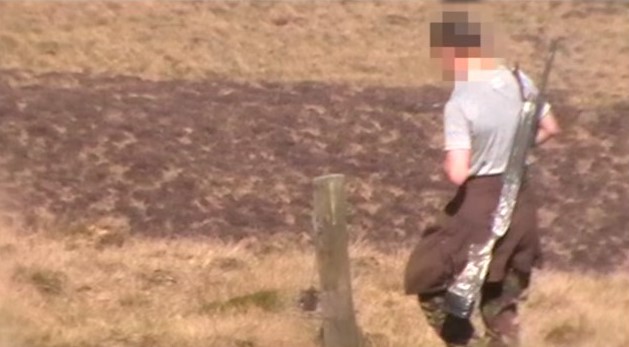Today’s edition of the BBC’s Landward programme had a small feature on proposals for the introduction of game shoot licensing, including contributions from Duncan Orr-Ewing (RSPB Scotland) and Lord David Johnstone (Scottish Land & Estates).
It is available to watch on BBC iPlayer for the next 29 days (Episode 12, starts at 17 mins – here).

We’ve reproduced the full transcript:
Presenter, Euan Mcllwraith: “The majestic golden eagle, soaring above Scottish hills. It’s an iconic image of wild Scotland. But a Government report has found that almost a third of all golden eagles which have been tracked by satellite died in mysterious circumstances, and the majority of those cases were found on land which is managed for grouse shooting. And the demise of the golden eagles has kick-started a re-examination of the way that game shooting is managed.
Game shooting is a major contributor to the Scottish rural economy and supports jobs in rural areas. But the field sport relies on there being a large population of grouse to shoot. The report’s findings led Scottish Environment Minister Roseanna Cunningham to propose an inquiry in to whether or not shooting estates should need a licence to operate.
But why would a licence protect eagles? Well at the moment, if a gamekeeper for example was caught killing a bird of prey, he might be prosecuted and in extreme cases be sent to jail, but the estate would still be allowed to carry on doing business. But the threat of a removal of a licence to operate could prove a more effective deterrent.
The proposal has delighted some groups and horrified others.
With me now are Duncan Orr-Ewing of RSPB Scotland and David Johnstone of Scottish Land & Estates.
Duncan, from your point of view, what’s the attraction of a licence, ‘cos there’s a lot of penalties at the moment, if a keeper gets convicted he goes to jail. Why a licence?”
Duncan Orr-Ewing: “Well, we very much welcome the Cabinet Secretary’s statement that she will look at options including a licensing system. The reason we support a licensing system is because we believe it will raise standards in the grouse moor sector in particular, which has a whole range of problems that have been highlighted in recent years and we think there is a need to reflect the public interest”.
Euan Mcllwraith: “David, from your point of view, you’re not in favour of licences. Why is that?”
David Johnstone: “There’s a number of reasons within that. There’s the SNH report that came out showing licensing going on around Europe, it clearly demonstrated that licensing, wildlife crime still exists in parts of Europe where licensing also takes place. But also we don’t think that it will actually be effective, we think that there are better ways of doing it that will lead to the higher standards that Duncan was talking about, creating good working relationships between ourselves and other stakeholders within, especially the Government”.
Euan Mcllwraith: “But is it not quite simple? If a nightclub has a licence, they break the rules, they go out of business. If a landowner on an estate was seen to be killing birds of prey, which does happen, you cease to have that right to run a business”.
David Johnstone: “This is a very, very different situation because within a nightclub, when a nightclub finishes business, the doors are shut and nobody else is allowed in to that nightclub at all, you control everything that’s going on. Within an estate on land in Scotland, under the 2003 Act, people have a right to roam anywhere, at any time, which we fully support, therefore you have people wandering across the land you’re managing, doing whatever they may wish to do and we have…”
Euan Mcllwraith: “Yeah, but people aren’t going to walk on to an estate and kill a bird, I mean it may happen, but the vast majority…”
David Johnstone: “I’m sorry but we have examples of people who have been interfering with legally set traps and everything else so it does happen, nefarious activity does go on, and that puts at risk people’s livelihood, their jobs, the economy, everything. You’ve got to prove you didn’t do something, as opposed to somebody proving that you did do something”.
Euan Mcllwraith: “Is that a real worry though? That an estate can go out of business, a vital part of the rural economy will cease to exist, on a very low level of proof?”
Duncan Orr-Ewing: “Look, we’re in this position because of a failure of self-regulation, despite repeated public warnings that the estate sector, particularly driven grouse moors, need to get their house in order. They have failed to deliver, that is why we’re at this point.
We believe a system of licensing can be developed, that has the right checks and balances in place, they do it in other countries, we imagine this won’t be done routinely….”
Euan Mcllwraith: “Duncan, David, I think this debate will rage for a long time to come. At the moment it’s in the hands of the Minister who will make a decision in the months and years to come”.
ENDS
When do you think Scottish Land & Estates will realise that the game’s up? That everybody, even the Scottish Government, now accepts the huge weight of evidence showing that illegal raptor persecution is undertaken as a matter of routine on many driven grouse moors?
Does David Johnstone honestly think that anybody is going to believe his inference that 41 satellite-tagged golden eagles ‘disappeared’ in suspicious circumstances on driven grouse moors as a result of ‘nefarious activity’ undertaken by random members of the public?
If he’s so sure of this (without any supporting evidence), then presumably SLE members won’t have any problem accepting the placement of monitoring cameras at raptor nest and roost sites on driven grouse moors? You’d think they’d welcome this measure, which would clear estate gamekeepers from the frame, right? It’s funny then that certain estates continue to refuse to participate in the placement of cameras by SNH’s Heads Up for Harriers project.
Lord Johnstone has used this tactic of blaming members of the public before, when objecting to the introduction of vicarious liability. In 2012 he was cited as saying there was a risk of estates being set up. Five years on, there hasn’t, as far as we are aware, been a single case of an estate being ‘set up’.

Johnstone talks about instances of interference with legally set traps as an example of ‘nefarious activity’. Yes, it does happen, although not as widely as the game-shooting industry claims (see here) and most, no, all of the examples that we’ve seen show vandalism of the trap (thus rendering it inoperable) as opposed to some random person placing illegally-set traps (e.g. pole traps, as pictured above (RSPB photo)) to infer guilt on the estate gamekeepers.
We should really be congratulating whoever is responsible for SLE’s media strategy (‘deny, deny, deny’) because the longer SLE and the grouse-shooting industry takes to accept responsibility, or continues to blame it on others, the more idiotic, the more complicit, and the more incapable of self-regulation, they look, and then the quicker a licensing regime will be imposed.
Former police wildlife crime officer Alan Stewart wrote a blog recently about the grouse shooting industry’s refusal to accept responsibility for raptor persecution and specifically about SLE’s Moorland Director Tim (Kim) Baynes’ accusations against so-called ‘extremists’ (that’ll be us) for ‘derailing progress’. It’s well worth a read – here.








 As regular blog readers will be aware, the Crown Office & Procurator Fiscal Service (COPFS), the public prosecutors in Scotland, have, in the space of two months, either dropped or refused to prosecute five cases of alleged wildlife crime. These include:
As regular blog readers will be aware, the Crown Office & Procurator Fiscal Service (COPFS), the public prosecutors in Scotland, have, in the space of two months, either dropped or refused to prosecute five cases of alleged wildlife crime. These include: Public prosecutors from Scotland’s Crown Office have dropped yet another case of alleged wildlife crime.
Public prosecutors from Scotland’s Crown Office have dropped yet another case of alleged wildlife crime.





